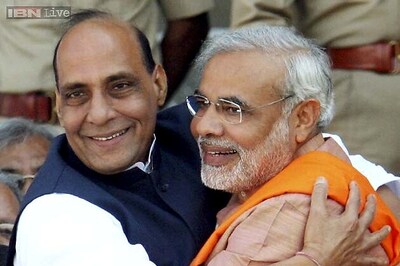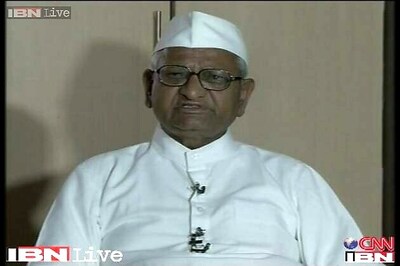
views
LONDON/NEW YORK: Central bankers worldwide have been unequivocal: There are no plans to cut back on money-printing any time soon, let alone raise interest rates.
Markets do not seem to be buying it.
U.S. 10-year Treasury yields rose on Wednesday to one-year highs above 1.4%, extending this year’s near 50 basis-point jump that has dragged up sovereign borrowing costs in Europe, Japan and elsewhere. Yields retreated later in the session to 1.37%.
The reckoning is that the spending step-up by U.S. President Joe Biden’s administration and post-vaccine economic reopening will fuel global growth and an inflation rebound, forcing central banks to “taper” or withdraw stimulus ahead of schedule.
A brighter outlook may indeed justify higher yields. But what has started to spook markets is a sudden move up in so-called real yields, or returns in excess of inflation. That shift can tighten financial conditions, suck cash from stock markets and in general, hamper the recovery.
It is spooking policymakers, too. Central bankers have weighed in this week to stress policy will remain loose for some time. But the mantra seems to be falling on deaf ears.
U.S. Federal Reserve Chair Jerome Powell knocked yields just a couple of basis points lower after commenting that the inflation target was more than three years away.
Euro zone yields only briefly heeded European Central Bank chief Christine Lagarde’s warning on Monday that the bank was “closely monitoring” the recent rise in yields.
(GRAPHIC – Who’s uncomfortable with rising bond yields?: https://fingfx.thomsonreuters.com/gfx/mkt/jbyvrdbewve/de2402.png)
(GRAPHIC – Powell reassures bond markets but yields stay high: https://fingfx.thomsonreuters.com/gfx/mkt/xlbvgdmzapq/US2402.png)
The reason, according to ING Bank, is that markets are pricing “with an increasing degree of conviction” the end of ultra-easy policies.
“Market confidence in the strength of the U.S. recovery is so strong and widespread that the tapering boat has sailed already,” they said, predicting “tapering” would happen by the end of 2021, rather than 2022 as predicted by Fed surveys.
Money markets show investors expect a Fed rate rise next year; some bet on an even earlier move. Euro-dollar futures suggest a roughly 64% chance of a 25 basis-point rate hike by the end of 2022. A week ago it was seen at 52%.
“Markets hear central bankers saying ‘Stop it, markets, you are going too far,’ but they are worrying central banks might change their mind as new data emerges,” said April LaRusse, head of fixed income investment specialists at Insight Investment.
If travel, dining out and shopping fully resume in coming months, it could unleash trillions of dollars in pent-up savings worldwide. Just in the United States, personal savings totaled $2.38 trillion at a seasonally adjusted annual rate in December, higher than at any time before the pandemic.
The steeper yield curve is “a reflection of the fact that we’re seeing these green shoots in terms of economic stats, comfort that the vaccine is kicking in,” said Anders Persson, chief investment officer of global fixed income at Nuveen.
(GRAPHIC – U.S. savings: https://fingfx.thomsonreuters.com/gfx/mkt/azgpoeylypd/Pasted%20image%201614185996035.png)
Some investors are betting that the rise in yields will prompt the Fed to act, but not by tightening policy.
“I do feel that some form of yield curve control is on the cards. Reason being, inflation will likely not be sustained. We will see a pop as we emerge from the COVID crisis but it will not be permanent,” said Nick Maroutsos, head of global bonds at Janus Henderson.
The Fed discussed the possibility of reweighting its bond purchases toward the long end of the curve at its November and December meetings. While the bank chose not to act then, yield curve control, which was used in the wake of the 2007-2009 financial crisis, remains an option.
ELSEWHERE
The picture is similar elsewhere.
In New Zealand, warnings of downside risks to the economy by Reserve Bank of New Zealand Governor Adrian Orr contrasted with buoyant data.
Bond yields shrugged off his comments to hit 11-month highs, while overnight index swaps (OIS) began pricing in the possibility of an end-2021 rate hike.
There is of course the possibility that the pledges to keep policy ultra-loose in the face of recovering growth only fan inflation expectations further. So could markets force central banks to act rather than just jawboning?
Here the Fed faces less of a dilemma than its peers.
Japan’s 10-year yields are near the highest since late 2018 at 0.12%, posing credibility issues for a central bank that aims to hold yields around 0%.
The ECB too may have to step up bond purchases under its emergency asset-purchase programme to combat rising yields.
“At the moment it’s a tension between markets and central banks rather than a conflict,” said Jacob Nell, head of European economics at Morgan Stanley.
“The attitude of the Fed is that if markets think growth is stronger than we do then that’s fine, it will help growth and inflation expectations. So the Fed won’t fight the market – it just doesn’t believe it.”
Disclaimer: This post has been auto-published from an agency feed without any modifications to the text and has not been reviewed by an editor
Read all the Latest News, Breaking News and Coronavirus News here




















Comments
0 comment